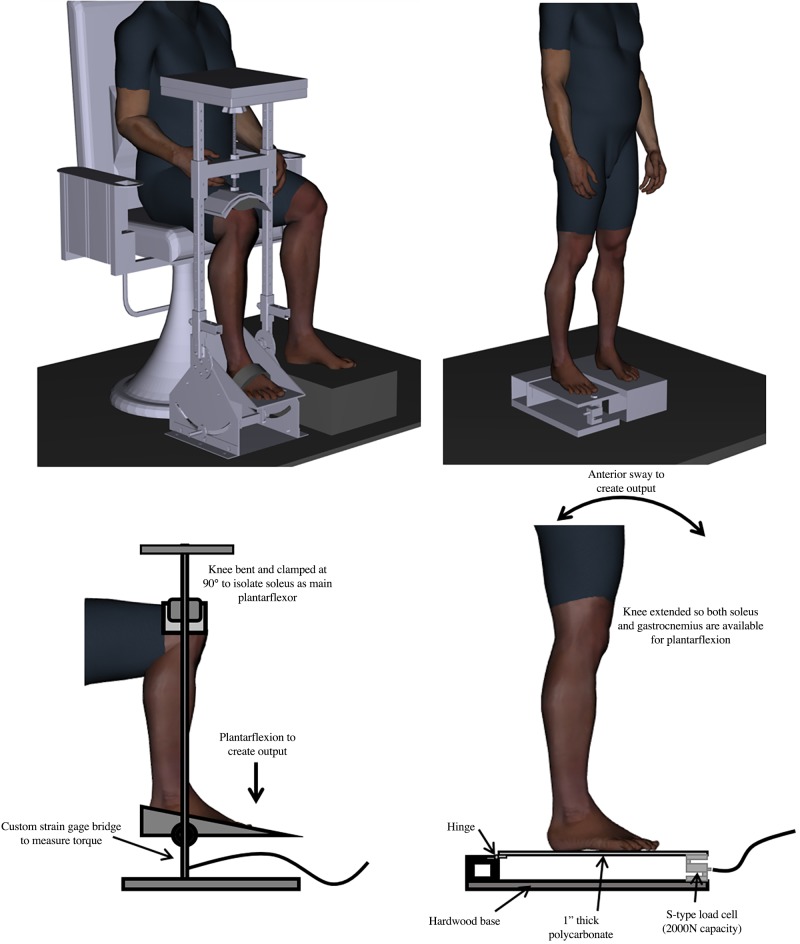Fig. 1.
Ankle dynamometer to measure isometric plantarflexion torque during sitting phase of experiment (left) and custom force platform to measure force during anterior-posterior sway (right). In the ankle dynamometer (left), the leg is clamped from the top of the knee (flexed at 90°) to the foot platform. A resistive transducer is used to capture isometric ankle plantarflexion torque. The ankle joint angle can be adjusted; however, it was held at 0° to agree with the standing joint angle at the beginning of the ramp. The custom force platform measured the relative force contribution of the soleus during an anterior-posterior sway. An S-type load cell (under front of platform; right) was zeroed to have feedback read zero during neutral stance. Compared with a solid-topped platform, a hinge in the rear ensured even minute adjustments in posture because forces over the front of the foot are not combatted by the tensile strength of a solidly attached platform. Participants had their foot placement marked onto paper to ensure it was in the same spot on the platform in the event of repositioning. A slight forward lean would both activate the soleus (proportional to the angle of the sway to maintain upright posture) and shift the participant’s center of pressure (exact COP not measured) forward on the platform, resulting in a greater force through the load cell. Digital human model visualization was created using Santos Pro software (SantosHuman Inc., Coralville, IA).

